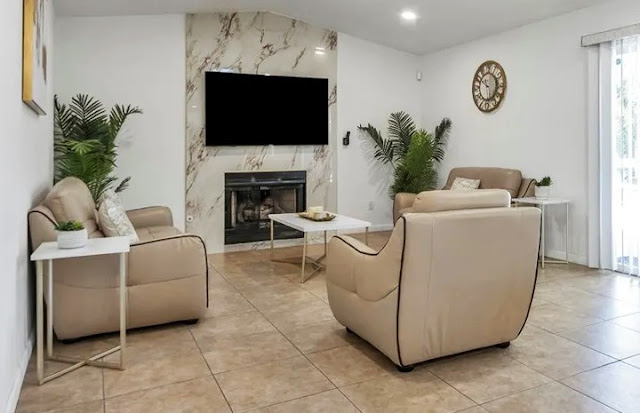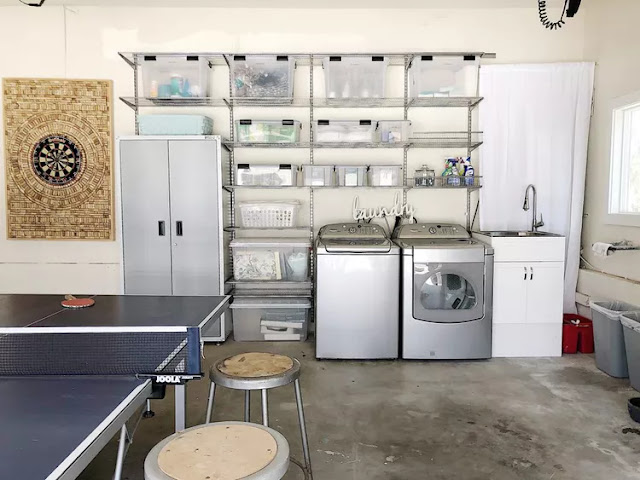How to Gain Buyers' Confidence
No matter how inviting your home looks after you have staged it, the buyer's professional home inspection can sabotage a sale. Understandably, buyers are cautious about going into debt and will want to be sure they are making the right choice when they purchase your home.
To put buyers' minds at ease, consider paying for some inspections before listing. It can alert you to problems you might not have known about, it gives you a chance to fix what will bother buyers, and it helps you set a fair price for your home.
Here are six deal-breakers that might show up on a report, and some ways you can address them.
1. Lead paint
Was your home built before 1978? If so, it could have lead paint on its trim, window frames, and the exterior surfaces like siding and railings. Although not all home inspectors will check for lead paint, it can pose health risks, particularly for children, and be a major issue for buyers.
 |
| If you have an older home, like one of these charming 1926 Sears houses pictured here or above, it will have lead paint under layers of new paint. |
Lead paint can be encapsulated with a fresh coat of today's safer paints. I suggest hiring an experienced house painter who will take the necessary precautions to be sure he either removes it safely or covers it safely. If the paint is on old window frames, it could be worth it to replace the windows.
A bigger problem could be asbestos used in home construction, and I have blogged about that. Here is the best advice about dealing with asbestos when you are selling. If your Realtor suspects you have problems with lead paint or asbestos, she'll ask you to sign a disclosure form. Note: asbestos can be in popcorn ceilings installed before 1980.
2. Plumbing problems
Do any of your faucets have low water flow? Does your outdoor spigot leak? Do your sinks, the shower or the tub have slow drainage? These are red flags for both buyers and home inspectors. If a thorough DIY cleaning of your faucets and drains, or replacing washers doesn't do the trick, it's time to call a plumber or your favorite handyman.
If you have a water filtration system, a water softener, or a tankless water heater, make sure you can brag about these features, too by keeping them in tip-top shape.
A plumber can replace rusted or leaking plumbing pipes and fixtures. According to Remodeling Magazine's Cost vs Value Report, a homeowner can expect a return of 60 to 70% of the investment when he upgrades plumbing systems before selling. Modern plumbing impresses buyers, even economical upgrades like new toilets and faucets.
3. Mold or water damage
Visible mold or signs of water damage are buyer turnoffs. Mildew, wet spots, peeling or bubbling paint, and musty odors are indications of problems that can lead to health concerns, which buyers want to avoid. And water-damaged surfaces look ugly, undermining your efforts to show yourself as a caring homeowner!
If you want to check for mold in your home, one testing company I can recommend is Immunolytics. You'll receive a kit of test plates in the mail that you will return for testing after you expose them to the air in different rooms. It will enable you to treat the source of the problem.
 |
| Homes built on a slab are more prone to water damage. If your home is close to a floodplain, buyers may want to know your elevation, and any history of flooding. |
4. Roof issues
For many buyers, the roof's condition is the first thing they will check to determine how well a house has been maintained. Besides its cosmetic appeal an attractive roof adds to your home, a good roof lets buyers know it won't leak or need replacing soon. For minor leaks, hire a local builder, handyman, or roofer.
If your roof shows missing, curled, or cracked shingles, or broken tiles, or sagging areas, it may be leaking into your home, even though you may not be aware of any water damage. Your home inspector will do moisture readings on walls to determine if there is leaking. Water can enter from the roof or from flashing or gutters.
A new roof is impressive. If yours needs replacing, and you decide to go ahead with it, be sure to tell your listing agent. Give her details like the manufacturer and the life span of the roofing.
 |
| Many homes show lots of roof in their profile, and a roof is a major part of curb appeal. Does your roof look this new and clean? |
5. Pest infestation
Animals, when unchecked, can quickly transform your comfortable home into a battleground. Common culprits include squirrels, raccoons, and mice, but insects like ants, spiders or cockroaches are even more common. For these kinds of problems, it's best to hire an exterminator to address the pest issue and seal entry points.
Also, consider hiring a termite inspector. If there’s any damage, repair the affected wood or replace structural components. Then, you can make this report available to a buyer, building their confidence.
Often, damage such as scratching and chewing done by your own pets on woodwork or walls can encourage buyers to look elsewhere for their dream home. Sometimes, this kind of damage can be remedied with wood filler or spackle and paint, while other times it requires replacing trim, doors, or drywall.
6. Foundation cracks
Poor drainage or faulty construction can cause cracks in a foundation. These can be a major concern for buyers, as it may signal structural instability. If you can't fix these cracks yourself, it's best to hire a professional to assess and repair them. If the issue is significant, consider getting an engineering report and performing necessary repairs, such as foundation underpinning or leveling.
 |
| Drainage from downspouts or the roof, or a house that has settled over time can cause foundation problems like this. |
Get the look, get the book
It sounds like I am giving you lots of homework! But if you want your home to be sold for a good price, often you need to bite the bullet and make repairs. Just one surprise can discourage a potential buyer's generous offer. Get multiple quotes and rely on recommendations when hiring contractors.
If you don't have the time or finances to do repairs, talk to your Realtor about adjusting the price of your home. Focus on your staging and addressing simple solutions like decluttering, painting, and making sure your curb appeal is great!
When you stage, be sure to use my e-book, DIY Home Staging Tips to Sell Your Home Fast and For Top Dollar. It will show you how simple staging can make your home sell for more money.









































